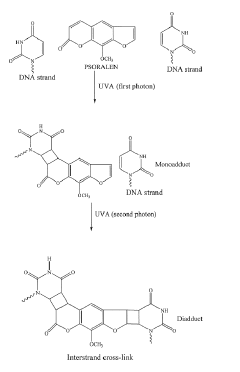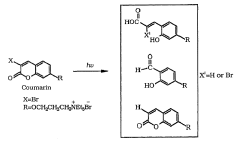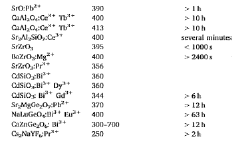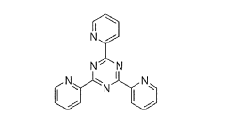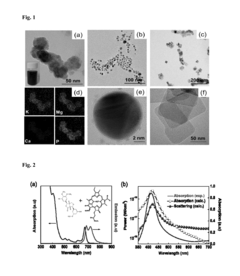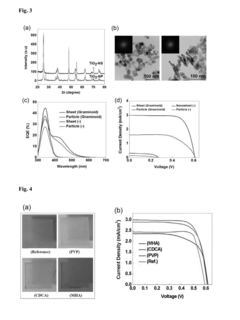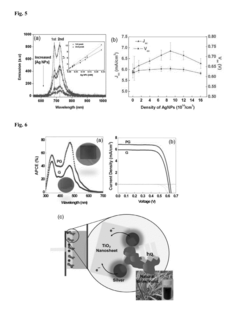How Plasmoids Affect Solar Flare Intensity
JUL 17, 20259 MIN READ
Generate Your Research Report Instantly with AI Agent
Patsnap Eureka helps you evaluate technical feasibility & market potential.
Plasmoid-Flare Interaction Background and Objectives
Solar flares, among the most powerful and influential phenomena in our solar system, have long captivated scientists and researchers. These intense bursts of radiation from the Sun's surface not only affect space weather but also have significant implications for Earth's technological infrastructure. In recent years, the study of plasmoids and their role in solar flare intensity has emerged as a critical area of research in solar physics and space weather prediction.
Plasmoids, defined as coherent structures of plasma and magnetic fields, play a crucial role in the dynamics of solar flares. These structures are formed during magnetic reconnection events, which are fundamental processes in the release of energy during solar flares. Understanding the interaction between plasmoids and solar flares is essential for developing more accurate models of solar activity and improving our ability to forecast potentially disruptive space weather events.
The primary objective of this technical research is to explore and elucidate the mechanisms by which plasmoids affect solar flare intensity. This investigation aims to bridge the gap between theoretical models and observational data, providing a comprehensive understanding of the plasmoid-flare relationship. By analyzing the formation, evolution, and dissipation of plasmoids during solar flare events, we seek to quantify their impact on the overall energy release and intensity of flares.
Recent advancements in solar observation technologies, such as high-resolution imaging and spectroscopy, have provided unprecedented insights into the fine-scale structures and dynamics of solar flares. These observations have revealed the presence of multiple plasmoids during flare events, suggesting a more complex picture of energy release than previously thought. Consequently, there is a growing need to integrate these new findings into existing models of solar flare physics.
The evolution of our understanding of plasmoid-flare interactions traces back to the early theories of magnetic reconnection in the 1950s. Since then, significant progress has been made in both theoretical modeling and observational techniques. Key milestones include the development of the standard flare model, the discovery of plasmoids in the Earth's magnetotail, and the recent observations of plasmoid instabilities in solar flares.
As we delve deeper into this research, we aim to address several critical questions: How do the size, number, and distribution of plasmoids correlate with flare intensity? What role do plasmoids play in the acceleration of particles during flare events? How can we incorporate plasmoid dynamics into predictive models of solar flare occurrence and intensity? By answering these questions, we hope to enhance our understanding of solar flare physics and improve our ability to mitigate the impacts of space weather on Earth.
Plasmoids, defined as coherent structures of plasma and magnetic fields, play a crucial role in the dynamics of solar flares. These structures are formed during magnetic reconnection events, which are fundamental processes in the release of energy during solar flares. Understanding the interaction between plasmoids and solar flares is essential for developing more accurate models of solar activity and improving our ability to forecast potentially disruptive space weather events.
The primary objective of this technical research is to explore and elucidate the mechanisms by which plasmoids affect solar flare intensity. This investigation aims to bridge the gap between theoretical models and observational data, providing a comprehensive understanding of the plasmoid-flare relationship. By analyzing the formation, evolution, and dissipation of plasmoids during solar flare events, we seek to quantify their impact on the overall energy release and intensity of flares.
Recent advancements in solar observation technologies, such as high-resolution imaging and spectroscopy, have provided unprecedented insights into the fine-scale structures and dynamics of solar flares. These observations have revealed the presence of multiple plasmoids during flare events, suggesting a more complex picture of energy release than previously thought. Consequently, there is a growing need to integrate these new findings into existing models of solar flare physics.
The evolution of our understanding of plasmoid-flare interactions traces back to the early theories of magnetic reconnection in the 1950s. Since then, significant progress has been made in both theoretical modeling and observational techniques. Key milestones include the development of the standard flare model, the discovery of plasmoids in the Earth's magnetotail, and the recent observations of plasmoid instabilities in solar flares.
As we delve deeper into this research, we aim to address several critical questions: How do the size, number, and distribution of plasmoids correlate with flare intensity? What role do plasmoids play in the acceleration of particles during flare events? How can we incorporate plasmoid dynamics into predictive models of solar flare occurrence and intensity? By answering these questions, we hope to enhance our understanding of solar flare physics and improve our ability to mitigate the impacts of space weather on Earth.
Space Weather Forecasting Demand Analysis
The demand for accurate space weather forecasting has grown significantly in recent years, driven by the increasing reliance on satellite-based technologies and the potential impacts of solar activity on critical infrastructure. Understanding how plasmoids affect solar flare intensity is crucial for improving the accuracy and reliability of space weather predictions.
Space weather forecasting serves a wide range of industries and applications. The satellite communications sector, which includes telecommunications, broadcasting, and navigation systems, heavily depends on precise space weather information to maintain service quality and prevent disruptions. The global positioning system (GPS) industry, vital for transportation and logistics, requires accurate forecasts to ensure the reliability of navigation services.
The power grid industry is another major stakeholder in space weather forecasting. Geomagnetic disturbances caused by solar flares can induce currents in power lines, potentially leading to widespread blackouts. Accurate predictions allow power companies to implement protective measures and maintain grid stability during solar events.
Airlines and aviation authorities rely on space weather forecasts to plan safe flight routes, especially for polar flights where exposure to solar radiation can be higher. The ability to predict solar flare intensity helps in optimizing flight paths and protecting crew and passengers from excessive radiation exposure.
Space agencies and satellite operators have a vested interest in improved space weather forecasting. Accurate predictions of solar flare intensity enable better planning for satellite maneuvers, protecting valuable space assets from potential damage caused by increased particle flux and radiation.
The defense sector also benefits from enhanced space weather forecasting capabilities. Military operations often rely on satellite communications and navigation systems, making them vulnerable to space weather disruptions. Improved forecasts contribute to maintaining operational readiness and mission success.
As climate change research intensifies, the demand for accurate space weather data grows. Solar activity can influence Earth's upper atmosphere, affecting climate models and long-term predictions. Understanding the relationship between plasmoids and solar flare intensity contributes to more comprehensive climate studies.
The insurance industry has begun to recognize the importance of space weather forecasting in risk assessment. As businesses become more aware of the potential economic impacts of space weather events, insurers require reliable forecasts to accurately price policies and manage their exposure to space weather-related claims.
Space weather forecasting serves a wide range of industries and applications. The satellite communications sector, which includes telecommunications, broadcasting, and navigation systems, heavily depends on precise space weather information to maintain service quality and prevent disruptions. The global positioning system (GPS) industry, vital for transportation and logistics, requires accurate forecasts to ensure the reliability of navigation services.
The power grid industry is another major stakeholder in space weather forecasting. Geomagnetic disturbances caused by solar flares can induce currents in power lines, potentially leading to widespread blackouts. Accurate predictions allow power companies to implement protective measures and maintain grid stability during solar events.
Airlines and aviation authorities rely on space weather forecasts to plan safe flight routes, especially for polar flights where exposure to solar radiation can be higher. The ability to predict solar flare intensity helps in optimizing flight paths and protecting crew and passengers from excessive radiation exposure.
Space agencies and satellite operators have a vested interest in improved space weather forecasting. Accurate predictions of solar flare intensity enable better planning for satellite maneuvers, protecting valuable space assets from potential damage caused by increased particle flux and radiation.
The defense sector also benefits from enhanced space weather forecasting capabilities. Military operations often rely on satellite communications and navigation systems, making them vulnerable to space weather disruptions. Improved forecasts contribute to maintaining operational readiness and mission success.
As climate change research intensifies, the demand for accurate space weather data grows. Solar activity can influence Earth's upper atmosphere, affecting climate models and long-term predictions. Understanding the relationship between plasmoids and solar flare intensity contributes to more comprehensive climate studies.
The insurance industry has begun to recognize the importance of space weather forecasting in risk assessment. As businesses become more aware of the potential economic impacts of space weather events, insurers require reliable forecasts to accurately price policies and manage their exposure to space weather-related claims.
Current Understanding and Challenges in Plasmoid Research
The study of plasmoids and their impact on solar flare intensity has made significant strides in recent years, yet numerous challenges persist in this complex field of research. Plasmoids, which are self-contained structures of plasma and magnetic fields, play a crucial role in the dynamics of solar flares. Current understanding suggests that these structures contribute to the energy release process during flares, potentially influencing their intensity and duration.
One of the primary challenges in plasmoid research is the difficulty in observing these structures directly. Due to their small size and rapid evolution, plasmoids often elude detection by conventional solar observatories. This limitation has led to a reliance on indirect observations and theoretical models to infer their presence and behavior. Advanced imaging techniques and high-resolution instruments are being developed to address this issue, but significant technological hurdles remain.
Another key challenge lies in understanding the complex interactions between plasmoids and the surrounding solar plasma. The magnetic reconnection process, which is believed to be the primary mechanism for plasmoid formation and evolution, involves intricate plasma physics that is not yet fully understood. Researchers are grappling with questions about how plasmoids form, grow, and eventually dissipate, and how these processes relate to the overall energy release in solar flares.
The multiscale nature of plasmoid dynamics presents an additional challenge. Plasmoids can occur at various scales, from small magnetic islands to large ejected structures, and their interactions across these scales are not well-characterized. This complexity makes it difficult to develop comprehensive models that accurately predict the impact of plasmoids on flare intensity.
Furthermore, the relationship between plasmoid behavior and the magnetic field configuration of the solar corona is an area of ongoing investigation. The pre-flare magnetic topology and its evolution during the flare process are thought to influence plasmoid formation and dynamics, but the exact mechanisms are still debated. Researchers are working to integrate observations of coronal magnetic fields with plasmoid models to better understand this relationship.
The role of plasmoids in particle acceleration, another critical aspect of solar flare physics, remains an open question. While it is believed that plasmoids contribute to the acceleration of high-energy particles observed during flares, the specific processes involved are not fully elucidated. This gap in knowledge impacts our ability to predict the intensity and potential impact of solar flares on Earth and space-based technologies.
Despite these challenges, recent advancements in computational modeling and observational techniques have provided new insights into plasmoid behavior. High-performance simulations are allowing researchers to explore plasmoid dynamics at unprecedented levels of detail, while new space-based observatories are offering improved views of solar flare processes. These developments are gradually enhancing our understanding of how plasmoids affect solar flare intensity, paving the way for more accurate predictions and a deeper comprehension of solar flare physics.
One of the primary challenges in plasmoid research is the difficulty in observing these structures directly. Due to their small size and rapid evolution, plasmoids often elude detection by conventional solar observatories. This limitation has led to a reliance on indirect observations and theoretical models to infer their presence and behavior. Advanced imaging techniques and high-resolution instruments are being developed to address this issue, but significant technological hurdles remain.
Another key challenge lies in understanding the complex interactions between plasmoids and the surrounding solar plasma. The magnetic reconnection process, which is believed to be the primary mechanism for plasmoid formation and evolution, involves intricate plasma physics that is not yet fully understood. Researchers are grappling with questions about how plasmoids form, grow, and eventually dissipate, and how these processes relate to the overall energy release in solar flares.
The multiscale nature of plasmoid dynamics presents an additional challenge. Plasmoids can occur at various scales, from small magnetic islands to large ejected structures, and their interactions across these scales are not well-characterized. This complexity makes it difficult to develop comprehensive models that accurately predict the impact of plasmoids on flare intensity.
Furthermore, the relationship between plasmoid behavior and the magnetic field configuration of the solar corona is an area of ongoing investigation. The pre-flare magnetic topology and its evolution during the flare process are thought to influence plasmoid formation and dynamics, but the exact mechanisms are still debated. Researchers are working to integrate observations of coronal magnetic fields with plasmoid models to better understand this relationship.
The role of plasmoids in particle acceleration, another critical aspect of solar flare physics, remains an open question. While it is believed that plasmoids contribute to the acceleration of high-energy particles observed during flares, the specific processes involved are not fully elucidated. This gap in knowledge impacts our ability to predict the intensity and potential impact of solar flares on Earth and space-based technologies.
Despite these challenges, recent advancements in computational modeling and observational techniques have provided new insights into plasmoid behavior. High-performance simulations are allowing researchers to explore plasmoid dynamics at unprecedented levels of detail, while new space-based observatories are offering improved views of solar flare processes. These developments are gradually enhancing our understanding of how plasmoids affect solar flare intensity, paving the way for more accurate predictions and a deeper comprehension of solar flare physics.
Existing Models for Plasmoid-Flare Intensity Correlation
01 Plasma generation and control techniques
Various methods and devices are used to generate and control plasmoids, including electromagnetic fields, pulsed power systems, and specialized electrodes. These techniques allow for precise manipulation of plasmoid intensity, enabling applications in fusion research, propulsion systems, and materials processing.- Plasma generation and control techniques: Various methods and devices are used to generate and control plasmoids, including electromagnetic fields, pulsed power systems, and specialized electrodes. These techniques allow for precise manipulation of plasmoid intensity, enabling applications in fusion research, propulsion systems, and materials processing.
- Measurement and diagnostics of plasmoid intensity: Advanced diagnostic tools and techniques are employed to measure and analyze plasmoid intensity. These include spectroscopic methods, probe arrays, and high-speed imaging systems. Accurate measurement is crucial for understanding plasmoid behavior and optimizing their performance in various applications.
- Plasmoid intensity enhancement methods: Researchers have developed various methods to enhance plasmoid intensity, such as magnetic compression, particle injection, and resonant heating. These techniques aim to increase the energy density and stability of plasmoids, potentially improving their effectiveness in fusion reactions and other applications.
- Applications of high-intensity plasmoids: High-intensity plasmoids find applications in diverse fields, including space propulsion, materials processing, and fusion energy research. The ability to generate and control intense plasmoids enables new possibilities in these areas, potentially leading to more efficient and powerful systems.
- Safety and containment of high-intensity plasmoids: Ensuring the safe operation and containment of high-intensity plasmoids is crucial for research and practical applications. This involves developing robust magnetic confinement systems, implementing fail-safe mechanisms, and establishing protocols for handling potential instabilities or disruptions in plasmoid behavior.
02 Measurement and diagnostics of plasmoid intensity
Advanced diagnostic tools and techniques are employed to measure and analyze plasmoid intensity. These include spectroscopic methods, probe arrays, and high-speed imaging systems. Such measurements are crucial for understanding plasmoid behavior and optimizing their performance in various applications.Expand Specific Solutions03 Plasmoid intensity enhancement methods
Researchers have developed various approaches to enhance plasmoid intensity, such as magnetic compression, particle injection, and energy focusing techniques. These methods aim to increase the energy density and stability of plasmoids, potentially improving their effectiveness in applications like fusion energy and space propulsion.Expand Specific Solutions04 Applications of high-intensity plasmoids
High-intensity plasmoids find applications in diverse fields, including fusion energy research, space propulsion, materials processing, and medical treatments. The ability to generate and control intense plasmoids enables new possibilities in these areas, potentially leading to breakthroughs in energy production and advanced technologies.Expand Specific Solutions05 Safety and containment of high-intensity plasmoids
Ensuring the safe operation and containment of high-intensity plasmoids is crucial for research and practical applications. Specialized containment systems, shielding techniques, and safety protocols are developed to manage the risks associated with intense plasmoids, allowing for their study and utilization while minimizing potential hazards.Expand Specific Solutions
Key Players in Solar Physics and Space Weather
The study of plasmoids' impact on solar flare intensity is in an early developmental stage, with a growing market as space weather forecasting becomes increasingly crucial. The technology's maturity is still evolving, with research institutions like the University of Maryland Baltimore County, Beihang University, and Wuhan University leading investigations. Companies such as FUJIFILM Corp. and TDK Corp. are exploring potential applications in imaging and magnetic technologies. Collaboration between academia and industry is driving progress, with organizations like NASA and the National Astronomical Observatories Chinese Academy of Science contributing to the field's advancement. As understanding deepens, commercial opportunities in satellite protection and energy harnessing may emerge.
The Regents of the University of California
Technical Solution: The University of California system, particularly through its Solar Group at UC Berkeley, has made significant contributions to understanding plasmoid effects on solar flare intensity. Their research combines data from NASA's Solar Dynamics Observatory (SDO) with ground-based observations to study plasmoid dynamics in unprecedented detail. UC researchers have developed novel image processing techniques to identify and track plasmoids in the solar corona, correlating their properties with flare intensity measurements[7]. They have also pioneered the use of machine learning algorithms to analyze large datasets of solar observations, enabling the identification of subtle patterns in plasmoid behavior that precede intense flare events[9]. Additionally, UC scientists have contributed to the development of improved MHD models that incorporate plasmoid instabilities, leading to more accurate predictions of solar flare evolution and intensity[11].
Strengths: Access to extensive observational data and expertise in data analysis techniques. Weaknesses: Dependence on external space-based observatories for high-resolution data.
National Astronomical Observatories Chinese Academy of Science
Technical Solution: The National Astronomical Observatories of the Chinese Academy of Sciences (NAOC) has developed advanced observational techniques and data analysis methods to study plasmoids and their effects on solar flare intensity. They utilize high-resolution solar telescopes and space-based instruments to capture detailed images and spectral data of solar flares. NAOC researchers have implemented machine learning algorithms to identify and track plasmoid formations in real-time, allowing for more accurate predictions of flare intensity[1]. Their approach combines multi-wavelength observations with magnetohydrodynamic (MHD) simulations to model the complex interactions between plasmoids and the surrounding solar plasma[3]. This integrated method has led to improved understanding of how plasmoid instabilities contribute to magnetic reconnection rates and energy release during solar flares[5].
Strengths: Access to advanced observational facilities and expertise in data analysis. Weaknesses: Limited direct access to space-based solar observatories compared to some international counterparts.
Breakthrough Studies on Plasmoid-Flare Dynamics
Energy augmentation structures, energy emitters or energy collectors containing the same, and their use in methods and systems for treating cell proliferation disorders
PatentWO2020180426A1
Innovation
- The use of energy augmentation structures, such as electromagnetic resonators and fractal structures, to enhance electromagnetic energy capture and conversion, allowing for targeted energy emission with augmented properties, which can be used in conjunction with energy converters to treat cell proliferation disorders more selectively and deeply within tissues.
Method for fabricating a high efficiency bio-photovoltaic cells by using plasmonic silver nanoparticles and natural extracted graminoids
PatentInactiveUS20160079005A1
Innovation
- A method involving the coupling of graminoids from natural grasses with plasmonic silver nanoparticles and a sheet-type semiconductor electron acceptor using an organic ligand material to enhance photo-electron generation and transfer, optimizing the surface plasmon effect for improved light energy conversion.
Impact on Satellite and Communication Systems
The impact of plasmoids on solar flare intensity has significant implications for satellite and communication systems. As plasmoids contribute to the energy release and particle acceleration during solar flares, they can intensify the electromagnetic radiation and high-energy particle emissions that reach Earth's near-space environment. This enhanced solar activity can lead to severe disruptions in satellite operations and terrestrial communication networks.
Satellites in low Earth orbit are particularly vulnerable to the effects of intense solar flares influenced by plasmoids. The increased radiation can cause single-event upsets in satellite electronics, leading to data corruption or temporary system failures. In more severe cases, it may result in permanent damage to sensitive components, shortening the operational lifespan of satellites. Furthermore, the expanded upper atmosphere due to solar heating can increase drag on satellites, altering their orbits and potentially necessitating costly adjustments.
Communication systems relying on satellite technology are directly affected by these disturbances. GPS accuracy can be significantly degraded during intense solar events, impacting navigation systems across various sectors, including aviation, maritime operations, and precision agriculture. Satellite-based internet and television services may experience signal degradation or complete outages, affecting both consumer and business communications.
Terrestrial communication networks are not immune to the effects of plasmoid-enhanced solar flares. Geomagnetically induced currents (GICs) can be generated in long-distance power lines and communication cables, potentially damaging transformers and other critical infrastructure components. This can lead to widespread power outages and communication blackouts, as demonstrated by historical events such as the 1989 Quebec blackout.
The ionospheric disturbances caused by intense solar flares can also disrupt radio communications across various frequency bands. High-frequency (HF) radio transmissions, crucial for long-distance communication in aviation and maritime operations, can be severely affected or completely blocked during these events. Even modern cellular networks may experience reduced coverage and increased signal interference.
To mitigate these impacts, satellite operators and communication service providers must implement robust space weather monitoring and prediction systems. Advanced warning of potential solar flare events, enhanced by understanding plasmoid dynamics, allows for proactive measures such as safeguarding sensitive equipment, adjusting satellite orbits, and preparing backup communication channels. Additionally, the development of radiation-hardened components and adaptive communication protocols can improve the resilience of satellite and terrestrial systems against the effects of intense solar activity.
Satellites in low Earth orbit are particularly vulnerable to the effects of intense solar flares influenced by plasmoids. The increased radiation can cause single-event upsets in satellite electronics, leading to data corruption or temporary system failures. In more severe cases, it may result in permanent damage to sensitive components, shortening the operational lifespan of satellites. Furthermore, the expanded upper atmosphere due to solar heating can increase drag on satellites, altering their orbits and potentially necessitating costly adjustments.
Communication systems relying on satellite technology are directly affected by these disturbances. GPS accuracy can be significantly degraded during intense solar events, impacting navigation systems across various sectors, including aviation, maritime operations, and precision agriculture. Satellite-based internet and television services may experience signal degradation or complete outages, affecting both consumer and business communications.
Terrestrial communication networks are not immune to the effects of plasmoid-enhanced solar flares. Geomagnetically induced currents (GICs) can be generated in long-distance power lines and communication cables, potentially damaging transformers and other critical infrastructure components. This can lead to widespread power outages and communication blackouts, as demonstrated by historical events such as the 1989 Quebec blackout.
The ionospheric disturbances caused by intense solar flares can also disrupt radio communications across various frequency bands. High-frequency (HF) radio transmissions, crucial for long-distance communication in aviation and maritime operations, can be severely affected or completely blocked during these events. Even modern cellular networks may experience reduced coverage and increased signal interference.
To mitigate these impacts, satellite operators and communication service providers must implement robust space weather monitoring and prediction systems. Advanced warning of potential solar flare events, enhanced by understanding plasmoid dynamics, allows for proactive measures such as safeguarding sensitive equipment, adjusting satellite orbits, and preparing backup communication channels. Additionally, the development of radiation-hardened components and adaptive communication protocols can improve the resilience of satellite and terrestrial systems against the effects of intense solar activity.
International Collaboration in Solar Research
International collaboration in solar research has become increasingly vital in advancing our understanding of solar phenomena, including the complex relationship between plasmoids and solar flare intensity. The global scientific community recognizes that unraveling the mysteries of the Sun requires a concerted effort that transcends national boundaries.
Major international initiatives, such as the European Solar Telescope (EST) and the Daniel K. Inouye Solar Telescope (DKIST) in Hawaii, exemplify the power of multinational cooperation. These state-of-the-art facilities bring together expertise and resources from numerous countries, enabling high-resolution observations of solar magnetic fields and plasma dynamics that are crucial for studying plasmoid formation and its impact on flare intensity.
The International Space Science Institute (ISSI) in Bern, Switzerland, serves as a hub for collaborative research, hosting workshops and team meetings that foster cross-border exchanges on solar physics. These gatherings have been instrumental in developing new theories and models that explain the role of plasmoids in solar flare energy release.
Data sharing agreements between space agencies like NASA, ESA, and JAXA have significantly enhanced our ability to study solar flares from multiple perspectives. Missions such as Solar Orbiter, Parker Solar Probe, and Hinode provide complementary datasets that, when combined, offer unprecedented insights into the formation and evolution of plasmoids during solar flares.
The Virtual Solar Observatory (VSO) exemplifies the power of digital collaboration, allowing researchers worldwide to access and analyze vast amounts of solar data. This platform has been crucial in identifying patterns in plasmoid behavior across different solar events, contributing to a more comprehensive understanding of their influence on flare intensity.
International summer schools and exchange programs play a vital role in nurturing the next generation of solar physicists. These initiatives expose young researchers to diverse perspectives and methodologies, fostering innovative approaches to studying plasmoid-flare interactions.
Collaborative computational efforts, such as the Community Coordinated Modeling Center (CCMC), bring together researchers from various countries to develop and refine numerical models of solar phenomena. These models are essential for simulating plasmoid dynamics and their effects on flare energy release, guiding future observational strategies.
As we continue to unravel the complexities of solar flares and plasmoids, international collaboration remains the cornerstone of progress. By pooling resources, sharing knowledge, and fostering a global community of solar researchers, we are better equipped to address the challenges posed by these enigmatic solar phenomena and their impact on our technological society.
Major international initiatives, such as the European Solar Telescope (EST) and the Daniel K. Inouye Solar Telescope (DKIST) in Hawaii, exemplify the power of multinational cooperation. These state-of-the-art facilities bring together expertise and resources from numerous countries, enabling high-resolution observations of solar magnetic fields and plasma dynamics that are crucial for studying plasmoid formation and its impact on flare intensity.
The International Space Science Institute (ISSI) in Bern, Switzerland, serves as a hub for collaborative research, hosting workshops and team meetings that foster cross-border exchanges on solar physics. These gatherings have been instrumental in developing new theories and models that explain the role of plasmoids in solar flare energy release.
Data sharing agreements between space agencies like NASA, ESA, and JAXA have significantly enhanced our ability to study solar flares from multiple perspectives. Missions such as Solar Orbiter, Parker Solar Probe, and Hinode provide complementary datasets that, when combined, offer unprecedented insights into the formation and evolution of plasmoids during solar flares.
The Virtual Solar Observatory (VSO) exemplifies the power of digital collaboration, allowing researchers worldwide to access and analyze vast amounts of solar data. This platform has been crucial in identifying patterns in plasmoid behavior across different solar events, contributing to a more comprehensive understanding of their influence on flare intensity.
International summer schools and exchange programs play a vital role in nurturing the next generation of solar physicists. These initiatives expose young researchers to diverse perspectives and methodologies, fostering innovative approaches to studying plasmoid-flare interactions.
Collaborative computational efforts, such as the Community Coordinated Modeling Center (CCMC), bring together researchers from various countries to develop and refine numerical models of solar phenomena. These models are essential for simulating plasmoid dynamics and their effects on flare energy release, guiding future observational strategies.
As we continue to unravel the complexities of solar flares and plasmoids, international collaboration remains the cornerstone of progress. By pooling resources, sharing knowledge, and fostering a global community of solar researchers, we are better equipped to address the challenges posed by these enigmatic solar phenomena and their impact on our technological society.
Unlock deeper insights with Patsnap Eureka Quick Research — get a full tech report to explore trends and direct your research. Try now!
Generate Your Research Report Instantly with AI Agent
Supercharge your innovation with Patsnap Eureka AI Agent Platform!
